What nudibranchs can you find in the winter? The answer is a lot! We decided to live in San Diego for the 2023-2024 winter in part because we can tidepool and not feel like our hands, toes, and noses are going to fall off from the cold. While there were a few days where a light breeze came in after the sunset which made for some very stiff hands, in general temps were great, and so were the nudibranchs!
In total, we documented 34 species, from Oct ’23 through Jan ’24. Often times we didn’t take photos of the more common species, as the clock is always ticking down to when the tide will come back in, and shepherd us back to the shore. If we documented everything, we could have been in the 50-60 species range, based on what our friends recorded. But we chose to focus on finding ‘lifers,’ the new-to-us nudibranchs and other marine critters.
I’ve broken up this post by the date we observed the sea slugs. When we’ve completed the second King Tide cycle of 2024 (mid-February), I’ll update this post. Enjoy!
December 16th, 2023


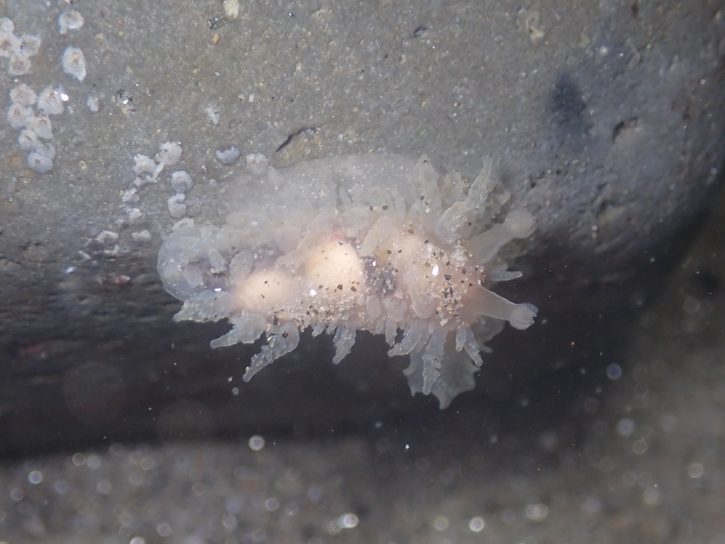
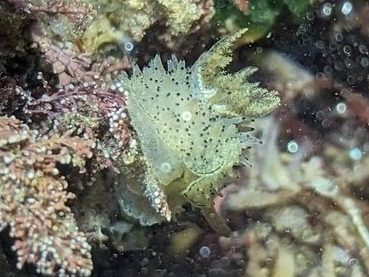
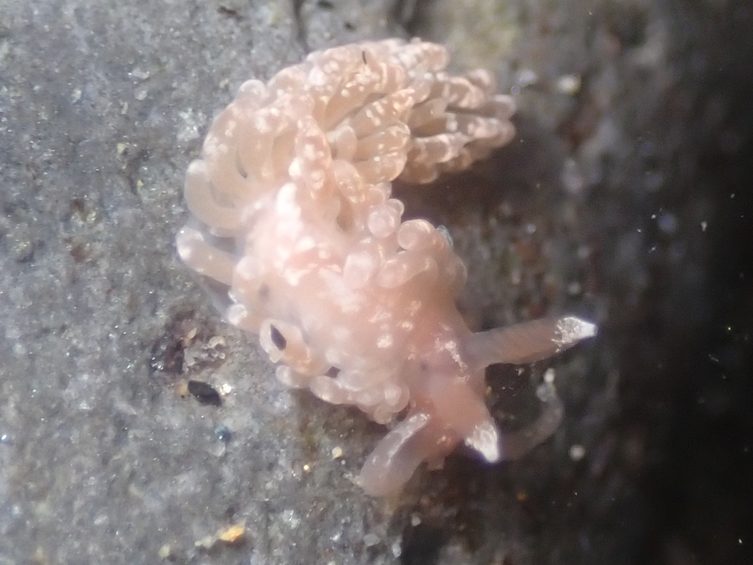
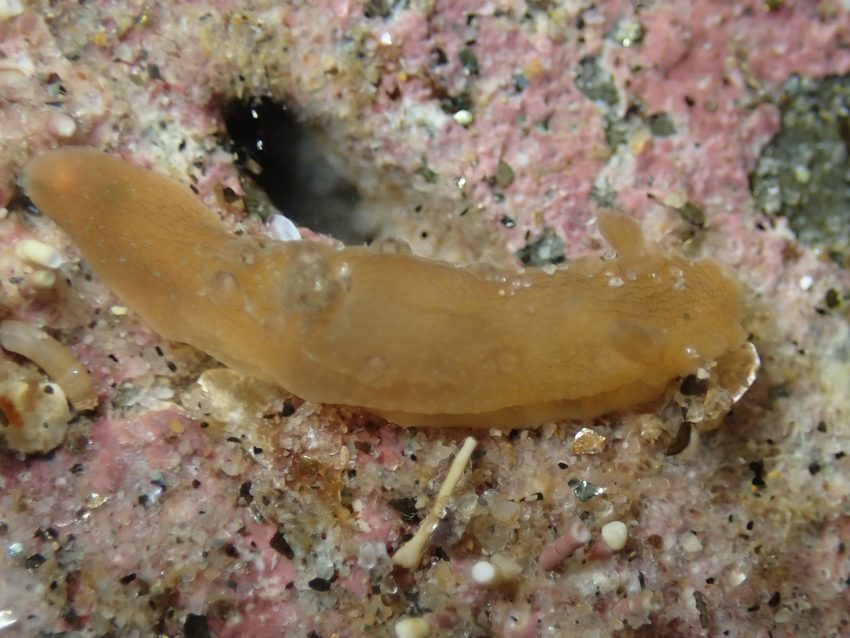


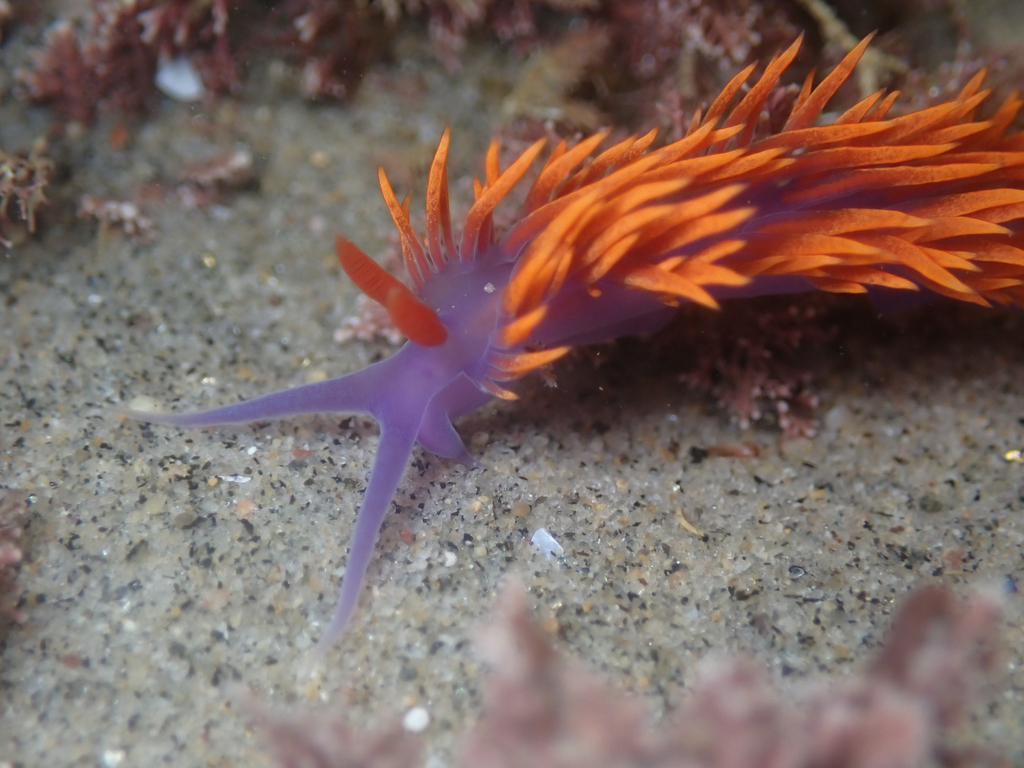
The Spanish Shawl, seen above is one of the most colorful and easier-to-spot nudibranchs here in SoCal, a definite favorite to newbies and common folk. I knew a few facts about this species before writing this post, but I wanted to do some research and hopefully learn something new about this species, and the Sea Slug Forum is a great resource to do so. Instead of regurgitating the new-to-me information in my own words, the paragraph below describes how this species gets its color really well, and it’s so fascinating!
“Flabellina iodinea preys selectively on the orange polyps of the athecate hydroid Eudendrium ramosum (Engel, 1976; McDonald & Nybakken, 1978; personal observations). McBeth (1972) showed that the purple pigment in the body of F. iodinea, the orange color in its cerata, and the scarlet red in its rhinophores are all derived from a single carotenoid pigment, astaxanthin, obtained from its hydroid prey. In the aeolid [Spanish Shawl], this pigment occurs in three slightly different states (free, esterified, and conjugated with a protein), resulting in the three distinct colors” (Sea Slug Forum page on Flabellina iodinea).
December 15th, 2023

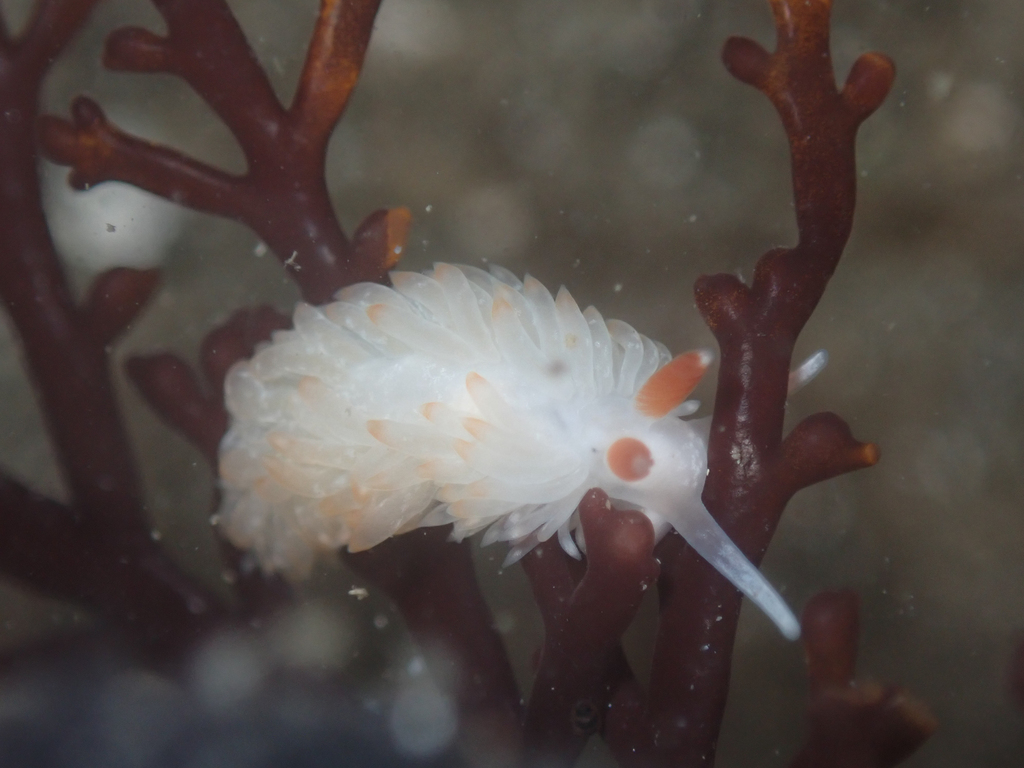
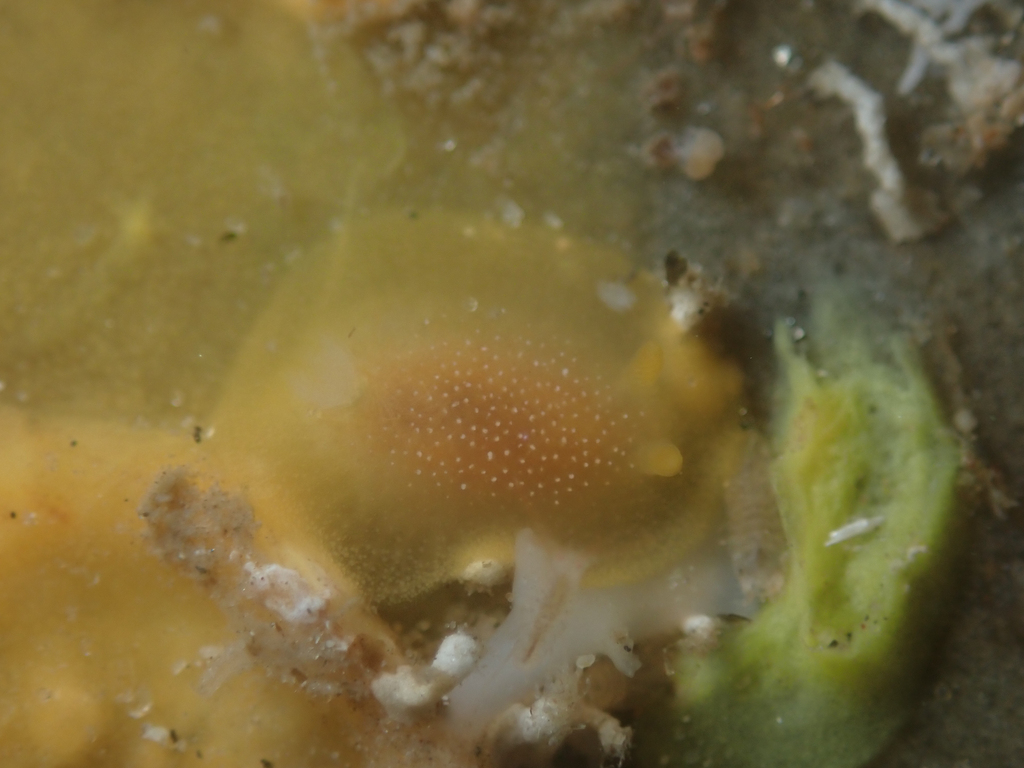

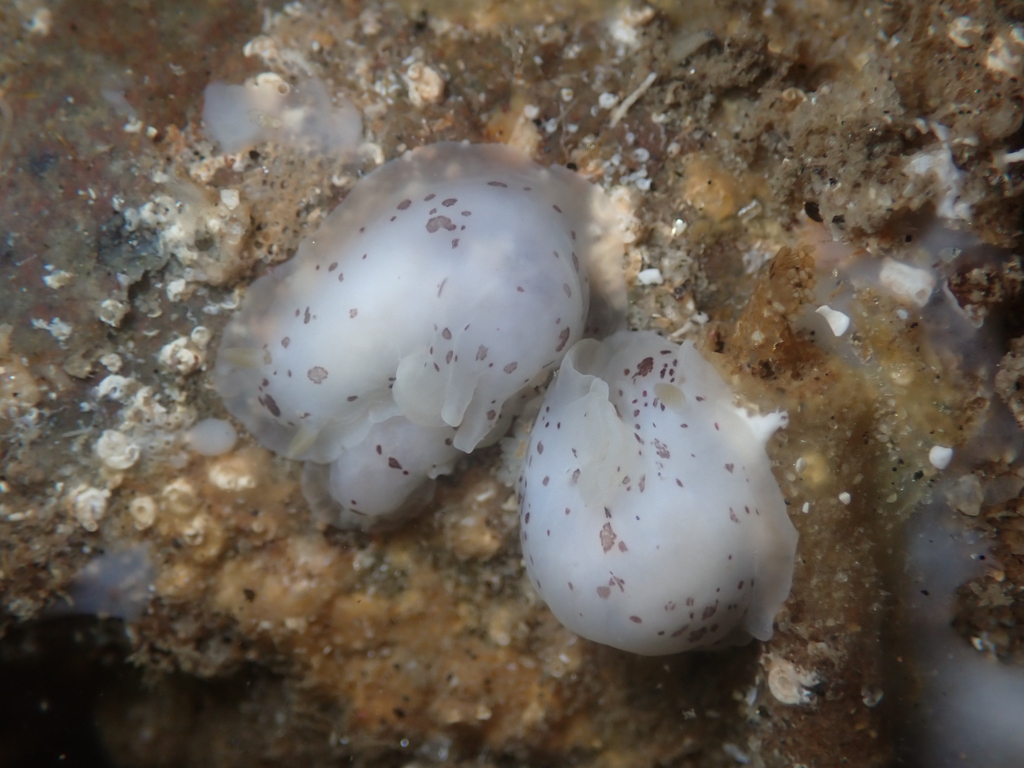
The last photo is of a Black-spotted Porostome/Dorid, and there are actually three in the photo! As you can see they are white to pale cream with “chocolate-brown to reddish-brown blotches of various sizes” (iNat Taxa Guide). Unlike most nudibranchs, this is one species, along with other spotted Nudis, like the San Diego Dorid, that if someone wanted to, you could match up individuals. I did this once, with my first Black-spotted, and with good photos, it’s definitely possible to compare multiple individuals.
Of the few we’ve seen, they’ve been a variety of sizes, but they can grow up to roughly 2.7 cm in length. Black-spotted Porostomes have been recorded from Monterey County down to the Baja.
October 29, 2023

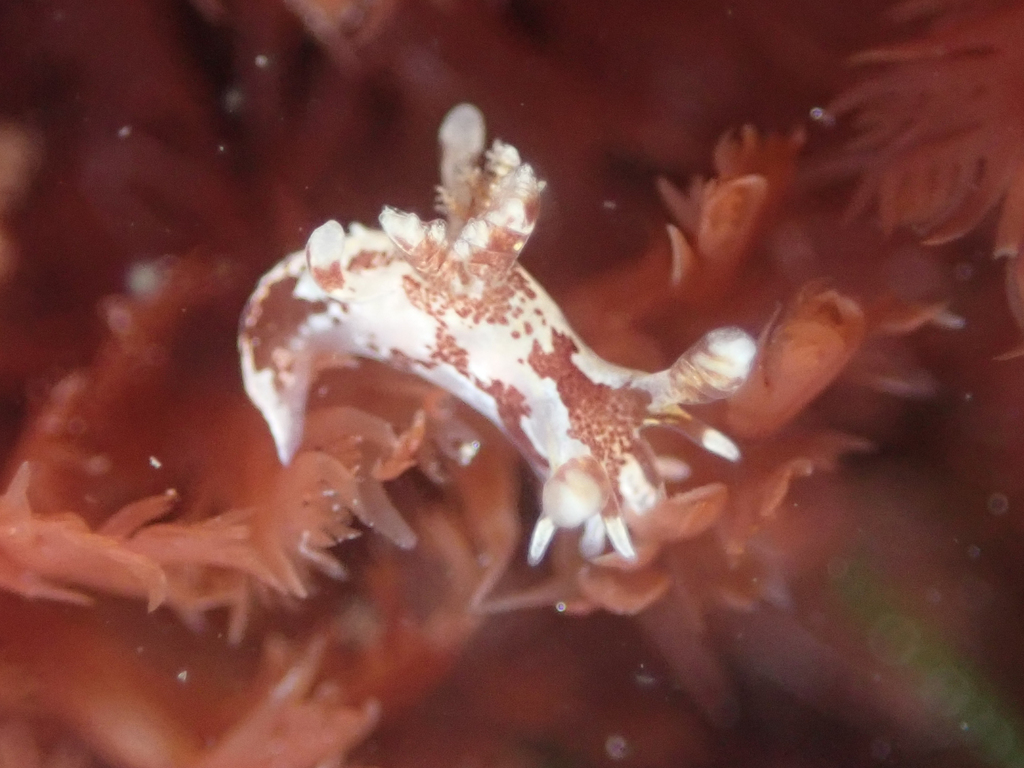
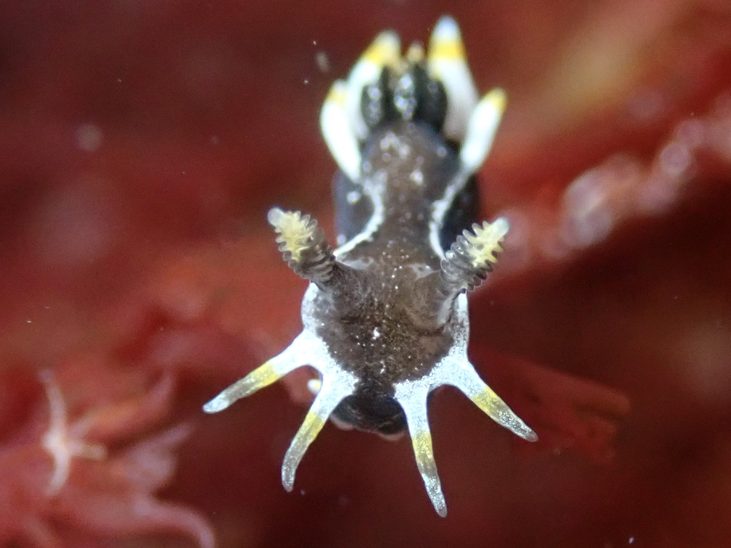

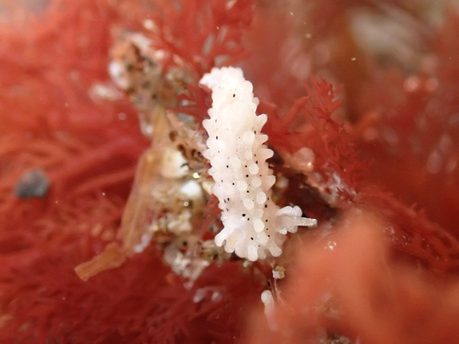
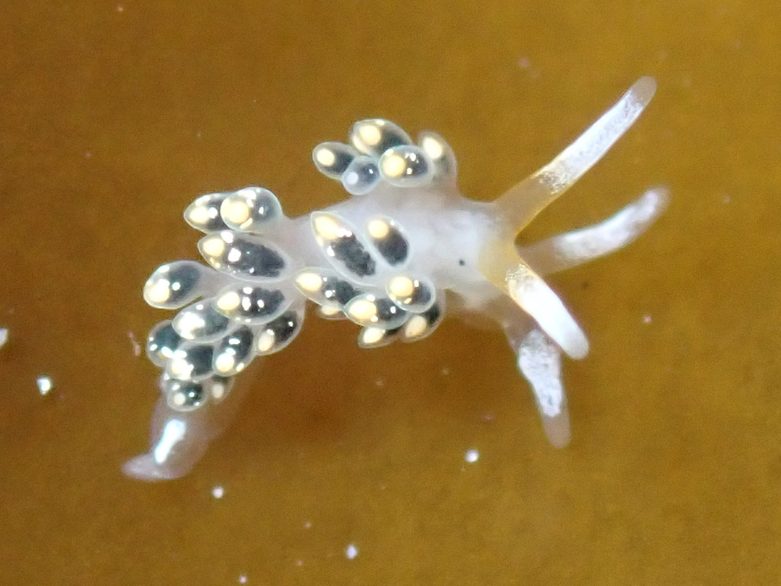
When tidepooling this is a common conversation:
Casual beach go-er: “What are you looking at?”
Me: “A tiny white sea slug.”
CBG: “Where?”
Me: “Look at the end of my fingernail”
CBG: “Ohhh my, that’s tiny”
All the slugs featured here are quite tiny, the only exception being the Hedgpeth’s Dorid, which is still quite tiny. On the last row, left side, the Salt-and-Pepper Doris (Aegires albopunctatus) were OUT and ABOUT during these winter tides. In general, they are easier to see against the algae compared to other species, but they still require a keen eye and interest in observing tiny white blobs with your booty in the air.
January 12th, 2024

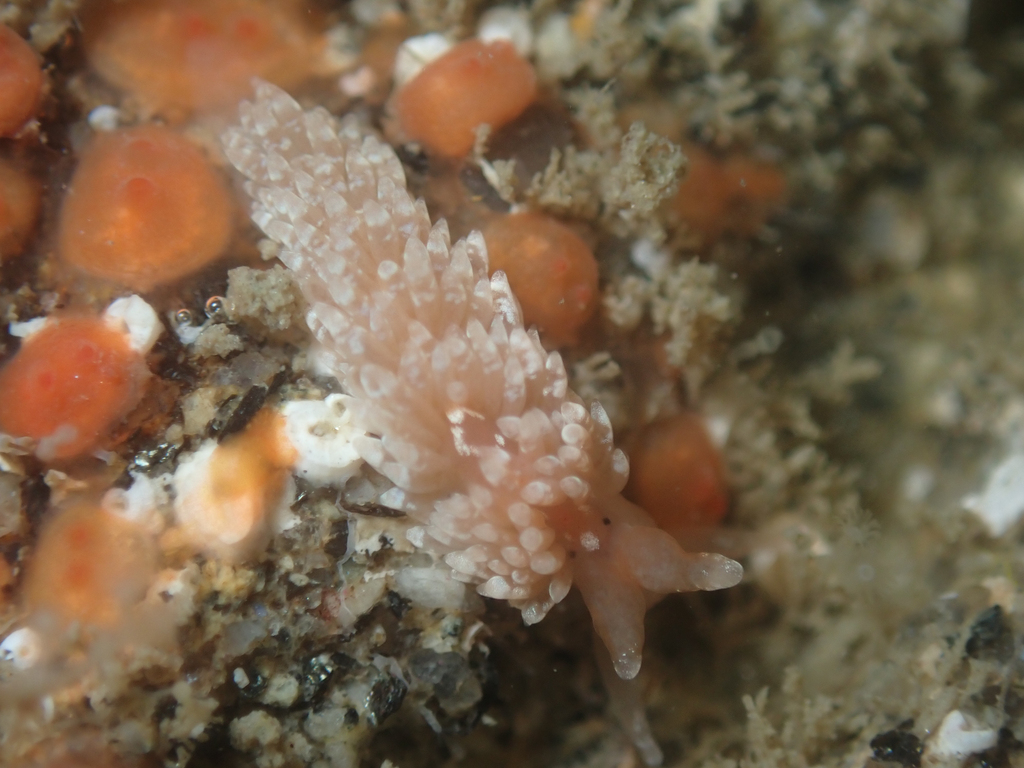
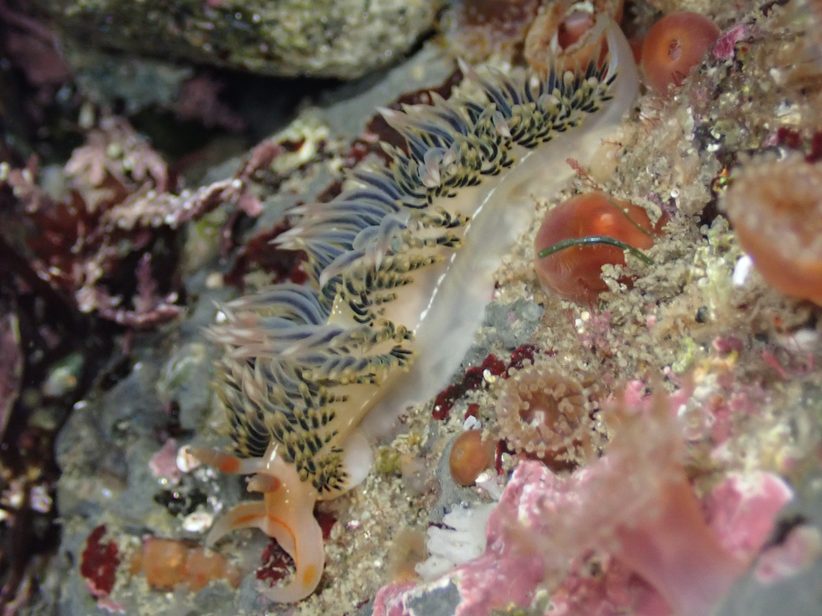



BLUE! BLUE! The California Chromodorid was an exciting fine, and a this individual was a very small one. tThey can grow up to 9cm (3.5 inches), but this one was round 2-3cm long! This nudibranch lives from Monterey Bay down to the Baja. It became regionally extinct in the northern part of its range and disappeared completely from California by 1984. THANKFULLY it reappeared in 2003 and is now found reliably in multiple places in Southern California. On iNaturalist, there was a total break in observations from 1992 to 2006.
January 13, 2024
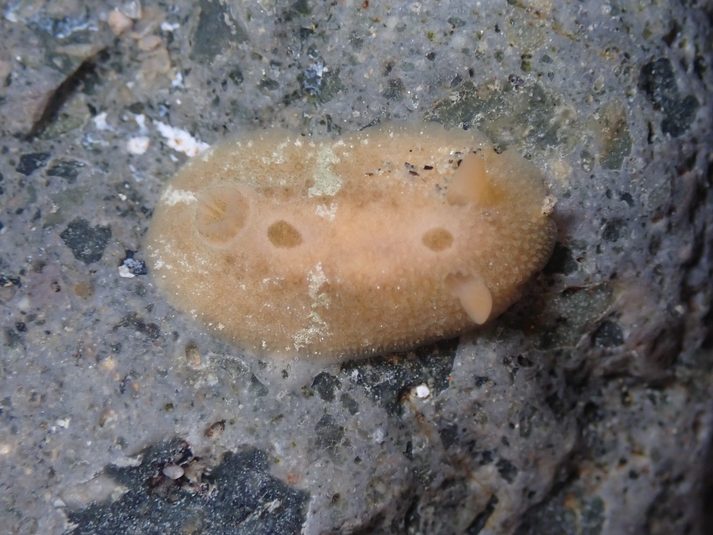




The last nudibranch in this set is the Elegant Aeolid, Abronica abronia, previously commonly known as the ‘Graceful’ Aeolid. This caused some initial confusion at the tidepools when this individual was spotted. Just another reminder to learn the scientific names over the common ones! This stunning species is found from Washington state down to Baja California, Mexico.
Nudibranchs are hermaphrodites, but this one, in particular, is giving me Misses vibes. So gentle, so polite, so much grace. Don’t you agree? This lovely lady was about one to one-and-a-half centimeters long. So you really need to get your noggin right above that water line and start planning how to get your partner to give you a neck massage post-tidepooling while you photograph this nudi. If you’ve been tidepooling and left feeling like you didn’t see much, it’s usually because you didn’t get close enough, and didn’t have enough mental pictures pre-loaded to know what to look for.
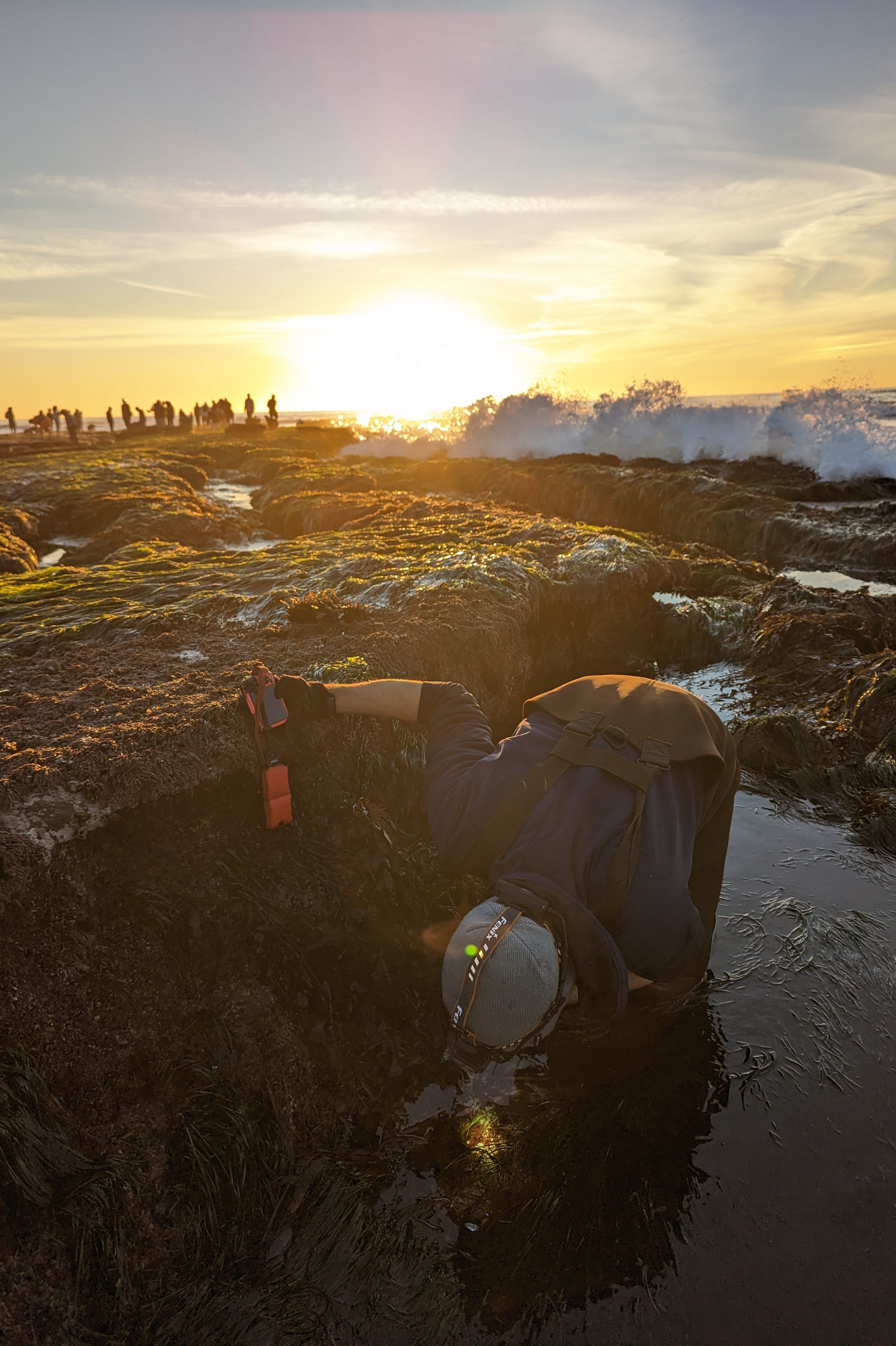
Do you have a favorite? Or a question, or inquiry about any of the winter nudibranchs we found? Leave a comment, and I’ll be sure to answer! Our observations can be viewed on iNaturalist.
Happy Tidepooling!
Cover photo is of a White-Spotted Sea Goddess, Doriopsilla albopunctata
Wow, you saw some amazing things.
LikeLike
Thank you for looking at my post! Yes, we absolutely did!
LikeLike